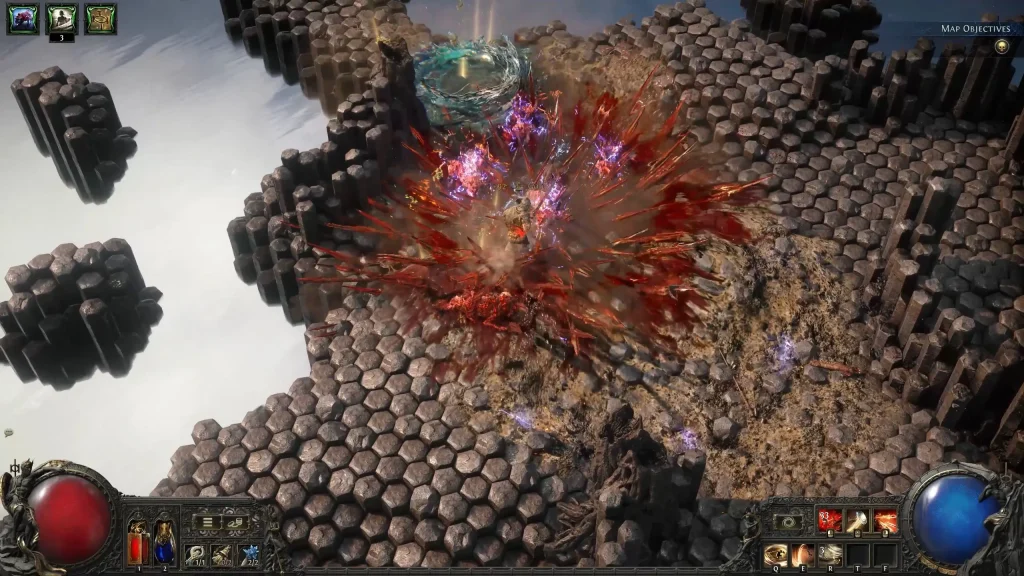The Evolution of Combat Design in poe 2
Combat has always been at the core of Path of Exile’s identity—a symphony of chaos where precision, build creativity, and mechanical mastery collide. With Path of Exile 2, Grinding Gear Games has taken this foundation and reimagined it into something deeper, more responsive, and ultimately more immersive. The result is an evolution that balances the series’ signature complexity with modern fluidity, creating a combat experience that feels both brutally tactical and satisfyingly visceral.
One of the most striking changes in Path of Exile 2’s combat design is its new animation system. Each attack, spell, and dodge feels weighty and grounded, thanks to a complete overhaul of character animations. Gone are the days when combat felt detached from physics—now, movement connects seamlessly with action. A heavy mace swing drags with believable inertia, a bow shot feels taut and deliberate, and dodging an incoming strike looks fluid rather than stiff. These improvements aren’t just aesthetic; they enhance gameplay readability, allowing players to better anticipate enemy attacks and react strategically.
The new weapon mechanics also revolutionize the way players approach combat. Each weapon type comes with its own unique identity and playstyle. Spears, for instance, emphasize spacing and thrusting precision, rewarding timing and positioning. Dual-wielding daggers enables fluid combo chains, while heavy two-handers deliver devastating impact at the cost of mobility. This differentiation adds a new layer of tactical choice—combat becomes less about raw damage output and more about mastering the rhythm of your weapon.
Spellcasting in Path of Exile 2 has also undergone a significant transformation. The new mana and cooldown systems emphasize pacing and resource management, pushing players to think more strategically about when to unleash their most powerful abilities. Spells now have stronger visual clarity, distinct cast times, and more deliberate power curves. A massive fireball feels like an earned explosion of destruction rather than a mindless spam ability. Moreover, elemental interactions—such as igniting oil-covered enemies or freezing them after soaking them in water—add a layer of environmental strategy previously unseen in the franchise.
The introduction of active dodging and defensive maneuvers further refines combat depth. Rolling or sidestepping enemy attacks gives every encounter a tactile intensity reminiscent of action RPGs like Dark Souls, without abandoning the traditional top-down perspective. This evolution gives players agency in defense, breaking away from reliance solely on armor, evasion, and resistances. Combat is no longer just about building the perfect defense on paper—it’s about reading the battlefield and reacting in real time.
Enemy design has also been elevated to match this new combat philosophy. In Path of Exile 2, monsters are not just health sponges or damage dealers—they’re strategically designed opponents. Some enemies use formations, shield walls, or flanking maneuvers. Bosses exhibit multi-phase fights that require adaptability, awareness, and mechanical skill. Each encounter becomes a learning experience, encouraging players to refine both build and reflex.

Perhaps the most innovative aspect of Path of Exile 2’s combat is its emphasis on readability and fairness without sacrificing challenge. Grinding Gear Games has made a clear effort to reduce “visual clutter”—that overwhelming flood of effects that often obscured danger in the first game. Now, spell indicators, attack telegraphs, and environmental cues are clear, helping players make informed decisions. This doesn’t mean the game is easier—it means difficulty comes from intelligent combat design rather than sensory overload.
Multiplayer combat has also seen significant refinement. Cooperative play now allows for synergistic skill interactions, where players can coordinate abilities in creative ways. A Frost Witch can freeze enemies while a Ranger shatters them with a well-timed volley; a Warlock can amplify allies’ damage through curse chains. These interactions transform party combat into a cooperative dance of timing and synergy, rewarding coordination instead of chaotic damage races.
The shift in combat design also extends to boss battles, which now serve as cinematic set-pieces that challenge both build knowledge and player skill. Instead of relying purely on stat checks, bosses use unique mechanics, dynamic environments, and reactive patterns. The result is an experience that feels handcrafted rather than procedural—a true test of mastery that evolves as the fight progresses.
Path of Exile 2’s combat represents more than a technical upgrade—it’s a philosophical shift. It bridges the gap between deep ARPG theorycrafting and the immediacy of action gameplay. Every strike, dodge, and spell cast feels meaningful. The chaos of Path of Exile has always been its charm, but in this sequel, that chaos has been shaped into artistry.
With its redefined systems and dynamic flow, poe 2 currency sale doesn’t just ask players to build powerful characters—it invites them to master the art of combat itself.